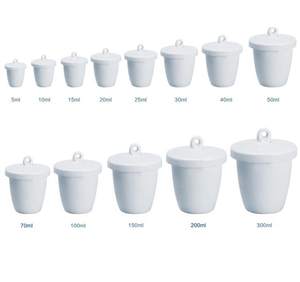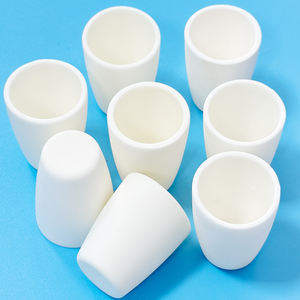Professional industry ceramic supplier, silicon nitride, silicon carbide, aluminum nitride and any other kinds of ceramics.
PRODUCT PARAMETERS
Description
Overview of Lab Refractory Zirconium Oxide Ceramic Crucible/Chemical Inertness
Lab Refractory Zirconium Oxide Ceramic Crucible/Chemical Inertness are specialized containers designed for withstanding extremely high temperatures in laboratory and industrial settings. They are essential for processes such as melting, calcining, and heat-treating a wide variety of materials, including metals, glasses, and chemicals. Our crucibles are engineered for superior thermal stability and chemical resistance, ensuring purity and reliability in the most demanding applications.
Features of Lab Refractory Zirconium Oxide Ceramic Crucible/Chemical Inertness
-
Exceptional Thermal Shock Resistance: Withstands rapid temperature changes without cracking, ensuring durability and a long service life.
-
High-Temperature Stability: Maintains structural integrity at extreme temperatures, often exceeding 1500°C.
-
Excellent Chemical Inertness: Resists corrosion and reaction with molten metals, acids, and aggressive chemical fluxes.
-
High Purity & Low Contamination: Manufactured from premium materials to prevent sample contamination during sensitive processes.
-
Optimized Thermal Properties: Designed for efficient heat transfer and consistent performance in furnace environments.
-
Robust Mechanical Strength: Offers good resistance to physical impact and abrasion during handling and use.
Specifications of Lab Refractory Zirconium Oxide Ceramic Crucible/Chemical Inertness
Lab crucibles made from zirconium oxide ceramic are very tough. They handle extreme heat well. These crucibles work reliably at temperatures reaching 1750°C. Some special grades go even higher. This heat resistance is vital for demanding lab work. It also withstands rapid temperature swings. Sudden heating or cooling won’t crack it easily. This reduces breakage risks. You save money replacing broken crucibles less often.
Chemical inertness is another key feature. Zirconia crucibles resist attack from many harsh substances. They don’t react easily with strong acids. Strong alkalis also cause little damage. Molten metals and salts find it hard to react with the zirconia surface. This chemical stability is crucial. It prevents contamination of your samples. Your experimental results stay pure. You get accurate data every time.
The material itself is very dense. Its surface is exceptionally hard. This density stops liquids and gases from seeping through. Nothing leaks into the ceramic body. Nothing leaks out either. Your melts stay contained. The hard surface resists scratching and wear. Crucibles last longer under heavy use. They maintain a smooth interior. Sample residues clean off easily. You avoid cross-contamination between batches.
Zirconia crucibles are stable over time. Their structure holds up. They don’t degrade quickly under heat or chemicals. This long-term reliability matters for consistent lab processes. You trust your equipment run after run. The material won’t flake or shed particles into your melts. Your materials stay uncontaminated. The crucible’s purity matches the purity of your work. It performs reliably under the toughest conditions.
Applications of Lab Refractory Zirconium Oxide Ceramic Crucible/Chemical Inertness
Lab refractory zirconium oxide ceramic crucibles offer special benefits. Their extreme chemical inertness matters most. Many materials react aggressively with container surfaces. Zirconia crucibles resist this. They handle strong acids, strong bases, and molten salts very well. Other crucible materials often fail here. Reactions contaminate samples. This ruins experiments or production batches. Zirconia avoids that problem. It keeps things pure.
This inertness works under high heat too. Zirconia crucibles withstand temperatures over 2000°C easily. Few materials stay stable like this. Many metals and alloys melt at these temperatures. They need a non-reactive container. Zirconia provides that. It doesn’t add unwanted elements to the melt. This is vital for precise alloy creation. Consistent quality depends on it.
Chemical analysis labs rely on this property. Preparing samples for testing requires dissolving materials. Aggressive fluxes like sodium carbonate or borax are common. These attack ordinary crucibles. Zirconia crucibles endure them. They ensure the sample dissolves completely. No crucible material mixes in. Accurate test results depend on pure solutions. Contamination skews data.
Crystal growth needs pure conditions also. Molten materials must solidify slowly. Any reaction with the container ruins the crystal structure. Zirconia’s inert surface prevents this interaction. It allows high-purity single crystals to form properly. This is essential for advanced electronics and optics. Impurities cause defects.
Metal smelting uses zirconia crucibles widely. Reactive metals like titanium or platinum group metals demand it. These metals grab oxygen easily. They react with silica or alumina crucibles. Zirconia doesn’t supply oxygen. It keeps the metal melt clean. This produces higher quality metal products.
Company Profile
Tanki New Materials Co.Ltd. focus on the research and development, production and sales of ceramic products, serving the electronics, ceramics, chemical and other industries. Since its establishment in 2015, the company has been committed to providing customers with the best products and services, and has become a leader in the industry through continuous technological innovation and strict quality management.
Our products includes but not limited to Aerogel, Aluminum Nitride, Aluminum Oxide, Boron Carbide, Boron Nitride, Ceramic Crucible, Ceramic Fiber, Quartz Product, Refractory Material, Silicon Carbide, Silicon Nitride, ect. please feel free to contact us.

Payment Methods
T/T, Western Union, Paypal, Credit Card etc.
Shipment Methods
By air, by sea, by express, as customers request.
5 FAQs of Lab Refractory Zirconium Oxide Ceramic Crucible/Chemical Inertness
What makes zirconia crucibles chemically inert?
Zirconium oxide offers very low reactivity. It resists attack from most chemicals. This inertness is key for lab work.
Do these crucibles handle strong acids and bases well?
Yes. Zirconia crucibles resist many strong acids. They resist strong bases too. This includes nitric acid and sodium hydroxide. Avoid hydrofluoric acid. It damages zirconia.
Are they good for molten metals or salts?
Yes. Their chemical inertness shines here. Zirconia crucibles withstand molten metals like platinum or palladium. They handle aggressive molten salts too. Reaction with the melt is minimal.
Is there a temperature limit for this inertness?
Yes. The inertness holds up to very high temperatures. Zirconia crucibles work reliably up to 2200°C. Some formulations go higher. Extreme heat doesn’t suddenly make them reactive.
How do I clean a zirconia crucible after harsh chemicals?
Use standard lab cleaning methods. Try hot water first. Use dilute acids or bases if needed. Avoid hydrofluoric acid completely. Ultrasonic cleaners work well. Rinse thoroughly after cleaning.
REQUEST A QUOTE
RELATED PRODUCTS
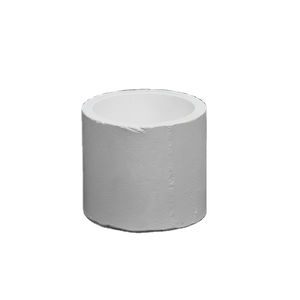
Alumina Ceramic and Zirconia Ceramic Labware Crucibles
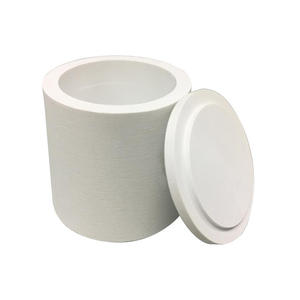
25Ul 40Ul 60Ul 70Ul 100Ul 99.7% Alumina Ceramic Crucible TG / TGA Sample Pan with Lid

1000g Quartz Glass Ceramic Platinum Melting Crucible Pot for Gold Silver Brass Platinum Smelting Refining
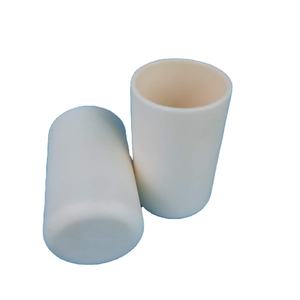
Laboratory High Temperature Ceramic Oven Dental Ceramic Crucible

Alumina Ceramic and Zirconia Ceramic Labware Crucibles
